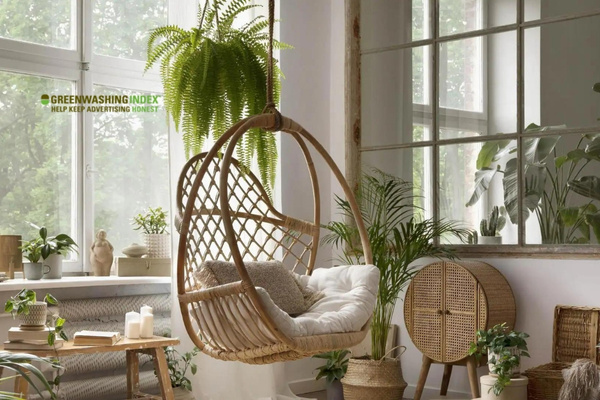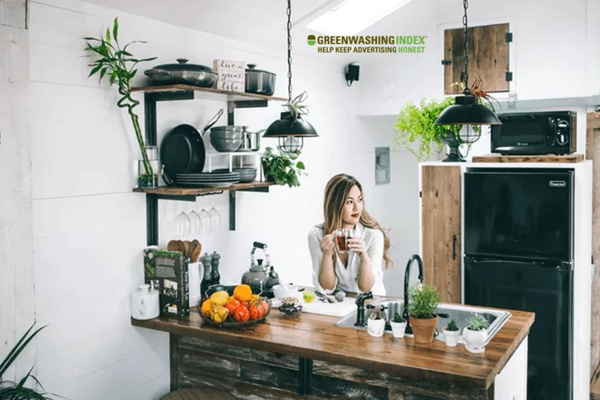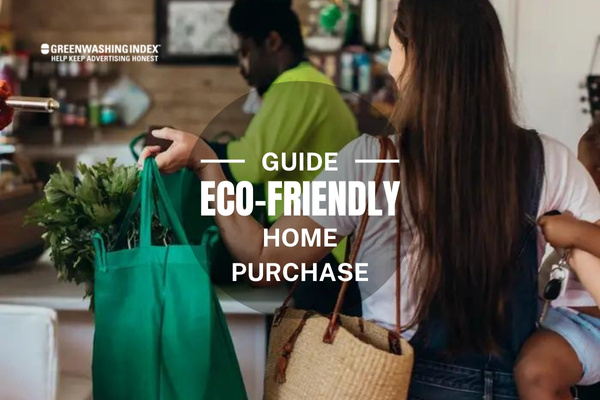As an eco-conscious individual, the decision to lead a greener lifestyle isn’t limited to recycling or using organic products. In fact, let’s take it a notch higher and talk about an aspect that might have previously been unexplored. How about an eco-friendly home purchase? Sounds intriguing, right? Keep reading if you’re interested in navigating the world of sustainable real estate.
Imagine living in a house that not only represents your commitment towards Mother Earth but also potentially saves thousands of dollars in utility bills. Sounds good? Well, this is precisely what you can expect from purchasing eco-friendly homes. Sustainable living spaces offer an ultimate win-win by minimizing environmental impact while maximizing energy efficiency and cost savings.
Key Insights You’ll Discover Here
- A step-by-step guide for making your first eco-friendly home purchase
- Vital features of sustainable real estate properties
- Financing options for green property investment
- Tips on maintaining your new energy-efficient home
- Bonus: Government incentives & rebates available for green homes
The Need for Eco-friendly Homes
It’s easy to forget that everything I do impacts the world around me, including where I decide to live. Rising global temperatures, deforestation, pollution — these are all undeniable indicators pointing toward the urgent need for change in our lifestyles.
The world is shifting towards sustainability, and green property investment is becoming increasingly popular. It’s not just about saving on utility bills or adding resale value to the property anymore; it’s about preserving natural resources and reducing our environmental footprint as much as possible.
A few compelling reasons why eco-friendly homes are vital include:
- Reducing Energy Usage: Energy-efficient housing uses less power, which helps decrease greenhouse gas emissions.
- Conserving Resources: Sustainable living spaces involve using materials that are renewable or recycled.
- Water Preservation: With systems for better water efficiency, clean water can be conserved.
- Healthier Living Environment: Green homes tend to maintain better indoor air quality with reduced toxic materials used in construction.
Rethinking Our Living Spaces
By making an eco-friendly home purchase, you’re not just buying a house; you’re embracing a lifestyle committed to protecting Earth and all its inhabitants. More than just being buildings with minimal impact on the environment during construction and operation phases, eco-friendly homes hint at reimagining what our living spaces can do – they can contribute to healing Earth rather than harming it.
Here’s how rethinking your living space contributes towards sustainability:
- Sustainable Building Materials: Using environmentally friendly products reduces harmful emissions during production, leading to better air quality.
- Efficient Energy Use: Be it installing solar panels or setting up an insulated home, energy-efficient housing can greatly reduce reliance on fossil fuels.
- Managed Water Usage: From rainwater systems to efficient plumbing, every component comes together to minimize wastage and maximize efficiency.
- Recycling and Composting: Waste management systems encourage homeowners to recycle or compost household waste, reducing pressure on landfills.
After all, sustainable living doesn’t have to entangle sacrifice; it’s more about making smarter choices that benefit me while also looking out for the well-being of future generations. It’s creating a balanced harmony between my needs and what I give back to Mother Earth in return. That’s the essence of making an eco-friendly home purchase.
Preparing For An Eco-Friendly Home Purchase
Making the big decision to purchase a home is always overwhelming. Now, imagine adding an extra layer of complexity – not just any home, but an eco-friendly one! There’s so much to know and understand before setting out on this exciting journey. But fear not; I’m here to guide you through it.

Setting Your Green Criteria
First things first, what exactly constitutes an eco-friendly home? Let’s break it down:
- Sustainable construction materials: These are building materials that are non-toxic, recyclable, and have low environmental impact. For example, bamboo is an excellent eco-friendly alternative as it grows rapidly compared to traditional hardwoods.
- Energy-Efficient Installations: Homes should be installed with energy-efficient appliances and fixtures that limit electricity usage and cut down energy bills, too! Things like solar panels or LED lights fall into this category.
- Water Conservation Features: Look for homes equipped with water-saving elements such as rainwater harvesting systems or flow-efficient showerheads and faucets.
- Waste Management Systems: An ideal green property investment includes separate systems for composting organic waste and recycling paper, glass, or plastic items at home.
Scouting For Desired Locations
The next crucial aspect involves figuring out areas that foster such green initiatives. Here are a few pointers on how you could make this choice:
- Research cities or areas actively promoting sustainable living spaces – they generally have local policies encouraging energy-efficient housing development or mandates for new houses to install solar panels.
- You may want to live closer to nature preserves parks where the air quality is better instead of urban areas congested with traffic congestion.
- Community gardens in neighborhoods give residents a shared space for organic farming – another great green initiative!
Our planet needs more love now than ever before! Hence, your choice of an eco-friendly home purchase will undoubtedly contribute to making a real difference. Be diligent in setting your green criteria and choose locations that share this vision. Remember, the change starts with us!
Key Features of an Eco-Friendly Home
As I delve into green home characteristics, four key elements come to mind. From sustainable construction materials to energy-efficient installations, water conservation techniques, and waste management systems–all combine to constitute a well-rounded, eco-friendly home.

Sustainable Construction Materials
An essential determinant of an eco-friendly home purchase involves the use of sustainable construction materials. These materials are not only good for our planet but make for more efficient and durable homes, too!
Here’s what you should look out for:
- Reclaimed wood: Consider houses built with reclaimed or recycled wood. This reduces the need for deforestation, which contributes significantly toward environmental conservation.
- Bamboo: If new constructions are on your radar, look for homes using fast-growing bamboo over slow-growing hardwoods.
- Recycled steel: Using recycled steel in place of conventional timber can reduce the need for trees in housebuildings by thousands.
- Insulated concrete forms (ICF): Homes using ICF resist high winds and benefit from improved insulation, which saves energy!
This list isn’t exhaustive but provides a solid starting point when assessing the eco-friendliness of your potential housing option.
Energy Efficient Installations
Another major aspect playing into any eco-friendly home purchase is energy efficiency. Such homes feature installations designed to consume less power or effectively generate their own:
- Solar panels: These convert sunlight directly into electricity that can power your entire house while reducing carbon emissions drastically.
- LED lighting: LED lights use less electricity and last vastly longer than traditional incandescent lamps.
- Energy Star appliances: Items such as refrigerators or air conditioners with Energy Star labels are specially designed to cut down on energy consumption.
Using these installations, homeowners can save considerable amounts on power bills while ensuring a minimal environmental footprint!
Water Conservation Features
Eco-friendly households also prioritize water conservation. Several important features focus on this aspect:
- Rainwater Harvesting Systems: These collect and store rain for later use; they are great for gardening, washing cars, or even as supplemental drinking water.
- Flow-efficient fixtures: Low-flow showerheads, dual-flush toilets, and aerated faucets can significantly reduce your home’s water usage.
Such systems allow you to make each drop count while substantially cutting down on your overall water consumption.
Waste Management Systems
Finally, let’s talk about waste management. Whether it’s managing day-to-day household waste or during construction itself, an eco-home has sustainable strategies in place:
- Home composting units: A good green home incorporates areas designed for composting kitchen scraps into nutrient-rich soil feed.
- Recycling facilities: Look for dedicated spaces that facilitate easy segregation and disposal of recyclable materials.
This might sound like a lot to digest, but starting with these points helps orientate the mindset towards a truly sustainable lifestyle! Enjoy delving deeper into these insights as you embark on your exciting eco-friendly home purchase journey!
Financing Your Eco-Friendly Home Purchase
Stepping into the world of sustainable real estate, especially with an eco-friendly home purchase, can seem daunting when it comes to the economic part. However, don’t let this discourage you!
There are many financial resources available to prospective green property investors. They range from government incentives and rebates for green homes to specific home loans tailored for eco-friendly housing. Let’s dive deeper into these two crucial financial routes.
Government Incentives & Rebates for Green Homes
The encouragement towards energy-efficient housing is not solely based on individual preference but is backed up by various government initiatives as well. You’ll find it astonishing how supportive the authorities can be when you decide to participate in saving our planet:
- Federal Tax Credits: The U.S. government rewards homeowners who choose to go green. It offers tax credits for energy-efficient products and renewable energy systems installed in homes through programs such as Residential Renewable Energy Tax Credit and Nonbusiness Energy Property Tax Credit.
- State Incentives: Alongside federal support, several states offer additional rebates or incentives tied to specific energy-efficient products or technologies.
- Utility Company Incentives: Many utility companies also provide discounts, rebate programs, or even free services like energy audits for their customers committed to sustainability.
I advise keeping an eye out on database platforms such as DSIRE, which is a comprehensive source of information about state, local, utility, and federal incentives that promote renewable energy and energy efficiency.
Home Loans For Green Houses
When it comes to financing my own eco-friendly home purchase, I found some exceptional loan programs targeted at promoting sustainable living spaces. Here’s what you should know:
- Energy Efficient Mortgage (EEM): This type of loan program helps buyers or homeowners save money on utilities by financing the cost of adding energy-efficient features to new or existing housing as part of their FHA-insured home purchase or refinancing program.
- Fannie Mae’s HomeStyle Energy Mortgage: This allows borrowers to finance energy-efficient upgrades when purchasing or refinancing a home. It can be combined with other Fannie Mae programs like HomeReady mortgage for low-income borrowers.
- VA Energy Efficient Mortgages (EEMs): Available to veterans, this loan enables the borrower to purchase a house, including the cost of energy-efficient improvements in the loan balance.
Remember that each program has different standards and requirements. It is vital to consult with trusted real estate and financial advisors before making any decisions.
Purchasing an eco-friendly home is not only a choice that contributes to planet preservation but also can come with unique financing options.
Whether you’re ticking off your checklist for sustainable construction materials, state-of-the-art energy efficient installations, water conservation features, and waste management systems in desired locations, ensure you check out the available incentives, rebates, and green loans that can make your move towards an environment-conscious lifestyle more comforting.
Maintaining An Eco-Friendly Lifestyle
Living in an eco-friendly home goes beyond the initial eco-friendly home purchase. It involves embracing a lifestyle that supports sustainability and considers both the environmental and economic benefits.

This means being mindful of our consumption habits, ensuring our waste disposal methods have minimal environmental impacts, and patronizing products and appliances that promote green living.
Mindful Consumption & Recycling Practices
Whether we realize it or not, our daily habits contribute significantly to the state of our environment. Hence, it’s crucial to make purchasing decisions mindful of their implications for a sustainable lifestyle.
Here are some ways we can incorporate eco-conscious practices:
- Reduce: Limiting consumption whenever possible is one of the easiest ways to minimize environmental impact. This might mean buying less or choosing items with recyclable packing.
- Reuse: Instead of discarding items after one use, consider if they can serve another purpose in your home.
- Recycle: Equipment like computers and electronics often contain materials that are harmful if they end up in landfills but beneficial when recycled.
- Composting: Organic waste like coffee grounds and vegetable peels make great compost material that you can use for your garden instead of chemical fertilizers.
These simple steps go a long way towards minimizing our ecological footprint – helping us treasure our homes while also respecting Mother Nature.
Using Green Products & Appliances
Embracing green living also includes using products that come from sustainable processes or help conserve resources like energy-efficient appliances or ones made from recycled materials.
Here are some notable examples:
- LED Lighting: They not only consume less electricity but also last longer than traditional bulbs.
- Energy-efficient Appliances: Choose those with an ENERGY Star rating as they use less energy, hence reducing greenhouse gas emissions.
- Reusable Shopping Bags: Avoid single-use plastic bags by bringing your own when you go shopping.
- Eco-friendly Cleaning Products: Many cleaning agents contain harmful chemicals. Opt for organic, biodegradable products instead.
Choosing green products also involves supporting companies that prioritize sustainable practices. This could be through fair trade, ensuring proper waste disposal, using renewable energy, and more.
Embarking on an eco-friendly home purchase isn’t a one-off event but a gateway towards adopting a greener lifestyle. By incorporating these mindful consumption habits and choosing sustainable products—not just in our homes but also in our everyday lives—we can truly make our green property investment worth it and contribute to preserving our environment for future generations.
FAQs
What is the cost implication of an eco-friendly home purchase?
While the initial cost of an eco-friendly home might be slightly higher than a traditional one due to specialized materials and installations, over time, they cut down on utility expenses significantly. This makes their long-term value considerably better.
Why should I consider an eco-friendly home?
Eco-friendly homes help reduce your environmental footprint and come with a plethora of benefits, like energy savings, healthier living space, and lower maintenance costs.
What makes a building “green” or “environmentally friendly”?
A building is considered ‘green’ when its construction process or operational attributes minimize the potential impact on climate change. For example, using sustainable materials and energy-efficient systems are key attributes of environmentally friendly homes.
Are eco-friendly homes as durable as conventional homes?
Yes, absolutely! The durability of an eco-friendly home is often superior to conventional homes, given the quality and sustainability of materials used in green construction.
Conclusion
After going through all the considerations and steps to make an eco-friendly home purchase, it’s clear that buying a green property isn’t just about making sound investment choices; it’s also about paving the path towards a sustainable future. No doubt, the process involves meticulous planning, research, and certain compromises.
However, the vast benefits to our environment and personal health undoubtedly outweigh the challenges. From using renewable construction materials to implementing water conservation measures in our living spaces, every single step we take towards sustainability leaves a positive impact on our planet.
Key Takeaway Points
- Understanding your green criteria is vital for a successful eco-friendly home purchase.
- Choose locales with established infrastructure favoring sustainable living.
- Look for homes with energy-efficient installations and waste management systems.
- Explore possible financial aid available for green property investment.
- Commitment to mindful consumption practices beyond house purchases plays an indispensable role in achieving sustainable living.



